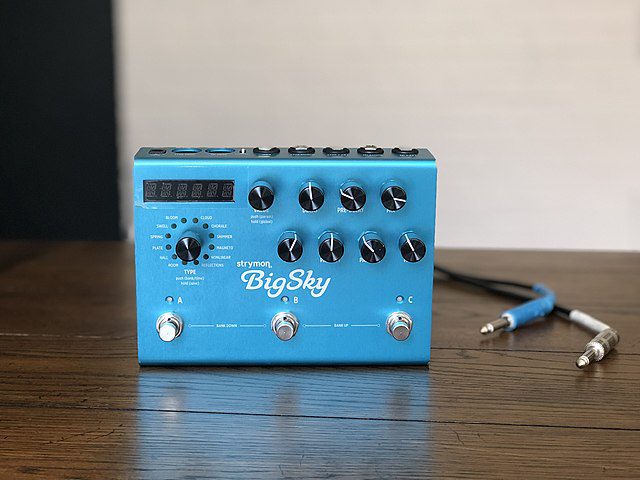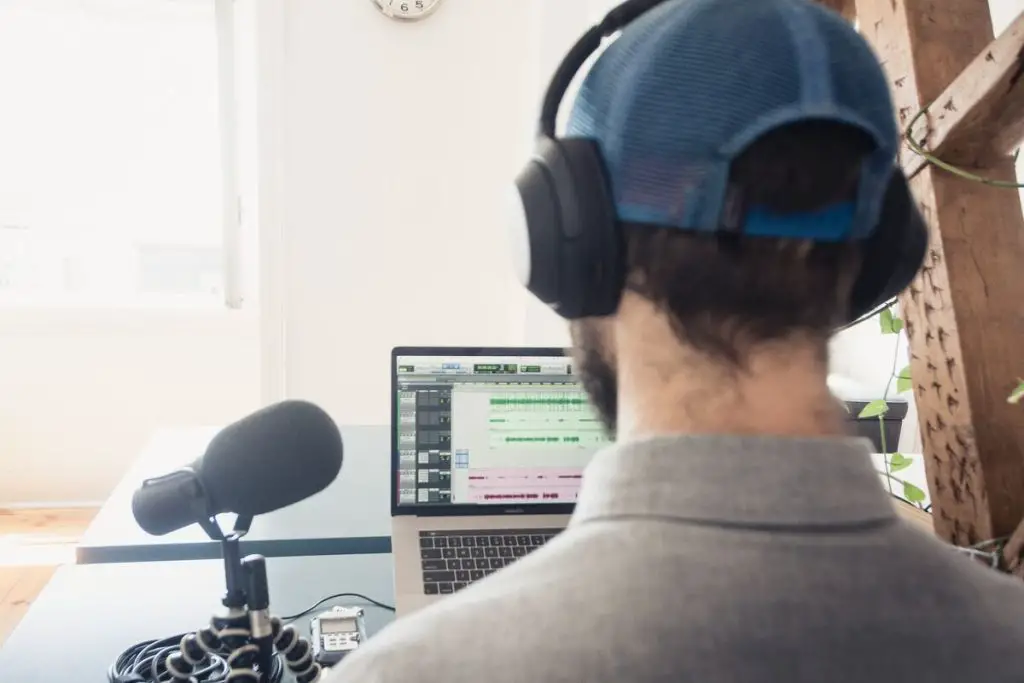Ever been in a cathedral, where you clap your hands, and that sound echoes off the ancient stone and lingers in the air as a secret whispered into the universe? That’s reverb, the ghost of your sound; echoing, chilling right? What is reverb, you ask? It’s that spice that adds depth and space to your mix, making your music feel like it’s living and breathing in its own room.
What is reverb? Reverb is the continuation of sound after the original sound has ceased, the echoing effect produced in space due to sound waves reflecting off various surfaces.
What is reverb?
Reverb, short for reverberation, is a phenomenon in audio and acoustics that represents the persistence of sound in a space after the original sound is produced. It’s essentially the reflections of a sound that arrive at the listener’s ear so closely after the direct sound that they fuse together and can’t be perceived as separate. This is created by sound waves bouncing off surfaces in the environment and then reaching the listener.

AKAI Professional MPK Mini MK3

AKAI Professional MPK Mini MK3
How does reverb affect the sound of your track?
Reverb works its magic in three key ways:
- It creates a sense of space: Reverb is one of the most important audio effects for creating a sense of space and depth in a mix. It can make a sound seem as though it’s occurring in a specific environment, from a small room to a large concert hall.
- It adds depth and dimension: Reverb helps your elements sit in their own ‘spaces’ in the mix. It’s like setting the stage for a play; each actor has their spot, and the whole scene comes to life.
- It glues your mix together: Reverb can help unify your different elements, making them sound like they’re all part of the same sonic landscape.
Let’s hit it with an example. Think about U2’s “Where the Streets Have No Name.” The Edge’s echoing guitar in the intro wouldn’t have nearly the same ethereal quality without reverb. It’s what gives it that ‘distant’ sound, creating a sense of vast open space even before the other instruments kick in.
Here’s a little ‘dos and don’ts’ table for you to start rocking reverb like a pro.
| Do | Don’t |
|---|---|
| Do use reverb to add depth and space to your mix. | Don’t overdo it – too much reverb can make your mix sound muddy. |
| Do experiment with different reverb settings to create different moods and atmospheres. | Don’t use the same reverb settings for every track – variety is the spice of sound! |
| Do use reverb to help blend different elements of your mix together. | Don’t rely solely on reverb to fix problems in your mix – it’s a tool, not a magic wand. |
Why is reverb a big deal in music production?
In music production and sound design, artificial reverb is often added to recorded sound to enhance the sense of space and depth. This is done through reverb processors or audio plugins, which simulate the complex pattern of reflections you would hear in different types of real-world spaces.
Reverb can also be used creatively, for example, to give a sense of distance (more reverb often suggests a sound source is further away) or to create surreal soundscapes that wouldn’t be possible in any real acoustic environment.

Consider the Beatles’ “A Day in the Life.” The orchestral build-up in that track, with its echoey, swelling sound, wouldn’t be nearly as mind-blowing without a healthy dose of reverb. It sounds like chaos unfolding in a huge, cavernous space, and that’s what gives the song its dramatic, surreal quality.
How can you manipulate reverb for different effects?
Reverb is highly customizable, allowing you to change several aspects of the effect for different purposes. Here are some common parameters that you can manipulate to achieve different results:
- Pre-delay: First up, you’ve got pre-delay. This controls the gap between the original sound and the onset of the reverb. Crank this up, and it sounds like your sound is bouncing off a far wall. Keep it short, and it’s like you’re in a smaller room.
- Decay time: Next, we have decay time or reverb time. This is the time it takes for the reverb to fade away. Longer decay times create a sense of larger spaces. Shorter times can make the space feel smaller and tighter.
- Diffusion: Then there’s diffusion. This controls how quickly the reflections in the reverb tail break up. Higher values make your reverb sound smoother, while lower values can give it a more pronounced, echoey character.
- Damping: Lastly, we have the damping. This controls how quickly certain frequencies in the reverb tail decay. It’s a bit like EQ for your reverb.
To drive this home, let’s look at a classic – the snare drum on Led Zeppelin’s “When the Levee Breaks.” That huge, cavernous snare sound? That’s a result of a long decay time and high diffusion, creating a smooth, large-room reverb that has become iconic in the music world.
Advantages and disadvantages of using reverb
When it comes to audio engineering, reverb is a double-edged sword. It can make your mix sound as grand as the Grand Canyon or as muddy as a swampland. Let’s dive into the pros and cons to get a clearer picture.
Advantages
Here’s why you’d want to bring it to your audio party:
- Adds Interest and Variety: Reverb can make a sound more interesting or complex by adding extra harmonics and reflections. This can be especially useful for simple or monotonous sounds, such as a basic synthesizer patch or a simple drum beat.
- Sustains Instruments: On certain instruments, reverb can be used to create the impression of sustain or to smooth out the transitions between notes. This can be especially useful for instruments with a short natural sustain, like the piano or guitar.
- Enhancing Emotional Impact: Different reverb settings can evoke different moods and feelings. For instance, a large reverb can evoke feelings of grandeur and majesty, while a small, tight reverb might feel intimate and close.
Disadvantages
But hold up! Reverb isn’t all sunshine and rainbows. There are some pitfalls to watch out for:
- Muddying the Mix: Overusing reverb can lead to a mix that sounds distant, washed out, and indistinct. It can reduce the clarity and punch of the mix.
- Masking Rhythmic Detail: Too much reverb, especially on percussive or rhythmically complex elements, can blur rhythmic detail and make the groove feel less tight.
- Increasing Complexity of the Mix: Each reverb added to a mix effectively creates a new “virtual space,” and managing all these spaces can become complex. It can be challenging to make everything sound good together.
- Overuse as a Crutch: Sometimes, reverb is used to cover up problems in a recording or mix, such as poor mic technique, bad timing, or lackluster performance. This can sometimes work, but it’s generally better to fix the underlying problem if possible.
If you want even more tips and insights, watch this video called “What You Don’t Know About Reverb – Reverb Masterclass” from the In The Mix YouTube channel.
Frequently asked questions (FAQ)
Do you still have questions about reverb? Below are some of the most commonly asked questions.
Can I use reverb on any instrument?
Absolutely! Reverb can be used on any instrument, from vocals to drums to guitars and more. However, the key is to use it judiciously. Too much reverb on an instrument can cause it to lose its definition in the mix. Think of reverb as a seasoning – a little can enhance the flavor, but too much can overpower the dish.
How can I avoid making my mix sound muddy with reverb?
The trick is to not go overboard with the reverb. Also, consider using EQ to cut the low frequencies in your reverb. Low frequencies can quickly build up and cause a mix to sound muddy. Another technique is to use pre-delay to create a gap between the original sound and the reverb, which can help maintain clarity.
What type of reverb should I use?
It depends on the sound you’re going for. Plate reverb is great for adding shimmer to vocals or strings. Hall reverb can make your track sound like it was recorded in a large space. Room reverb can add a sense of realism to your mix. Try out different types and see what works best for your track!
Conclusion
Well, there you have it, folks! We’ve been knee-deep in reverb, and now it’s time to come up for air. Did this post resonate with you? Got questions or thoughts, or just want to share your latest reverb-filled track? Drop a comment below! I read and reply to every comment. And if you found this post helpful, why not share it with a mate? Check out my full blog for more audio engineering tips and tricks. Thanks for hanging out, and keep those mixes sounding lush!
Key Takeaways
This article covered the concept and application of reverb in music production. Here are some key takeaways:
- Reverb is the reflection of sound in a space, creating an echo or resonance effect.
- Reverb helps to add depth and dimension to a track, giving a sense of space and atmosphere.
- Manipulating reverb parameters like pre-delay, decay time, diffusion, and damping can drastically alter the character of the reverb and the overall mix.
- Reverb can be both a boon and a bane in a mix. While it can create a sense of space and depth, too much can muddy a mix and overpower other elements.
- Different types of reverb can be used for different effects, from plate to hall to room reverb. Choosing the right type depends on the sound you’re going for.















